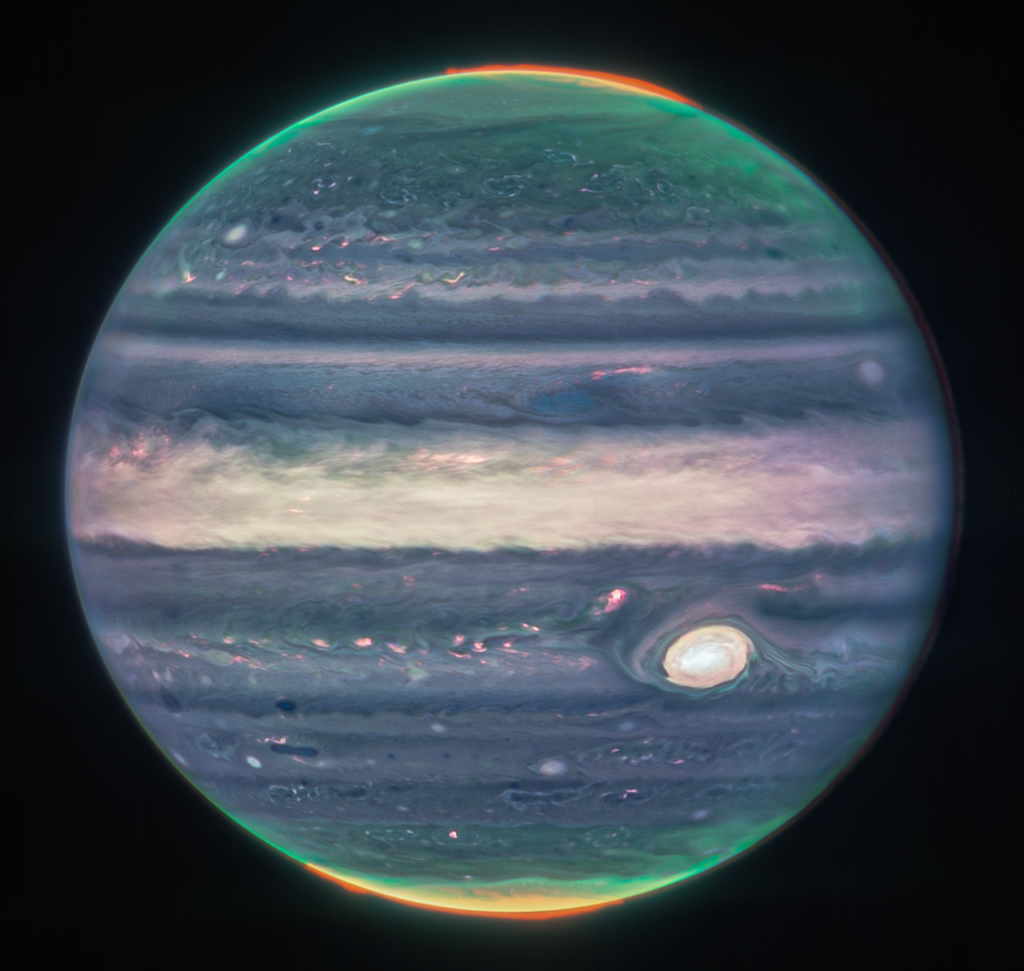
(Looking for last month’s night sky guide? You can find it at this link.)
The constellation Scorpius and Sagittarius have moved westward, but the lengthening nights keep these stars accessible for a little longer. This means in September we still get to see the richest part of the Milky Way before it sets for the year. In the east, the relatively star-poor constellations of Pegasus, Capricornus, and Piscis Austrinus are moving into view along with hundreds of galaxies accessible with a small telescope. The latter constellation’s lone bright star, Fomalhaut, shines alone in the southern sky for much of the night. Also in September, Mars and Saturn brighten, Jupiter and Neptune reach opposition, and the zodiacal light emerges in the morning sky for observers away from urban lights. Here’s what to see in the night sky this month…
3 September 2022. First Quarter Moon, 18:08 UTC.
5 Sept. Look for Venus rising about 1º from Regulus low over the northeastern horizon before sunrise. A pair of binoculars helps extract the pair from the twilight. Venus, on its way to conjunction with the Sun, outshines Regulus by more than 100x.
7 Sept. Mars and Aldebaran lie about 4º apart in the pre-dawn morning sky. At magnitude -0.2, Mars outshines magnitude +0.9 Aldebaran, although both have a similar yellow-orange coloring.
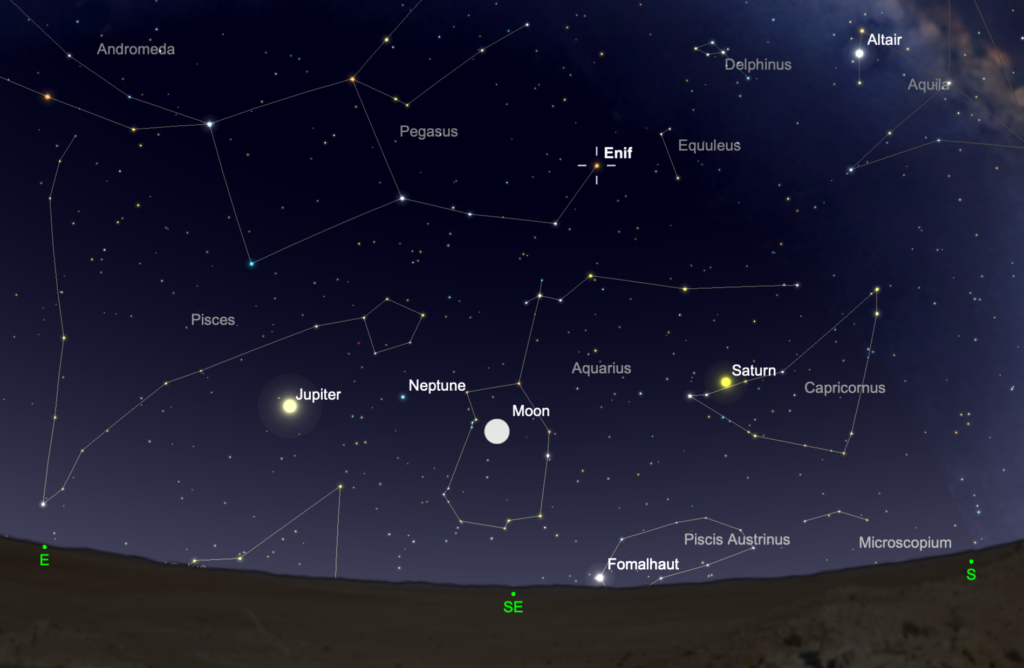
9 Sept. A fat gibbous Moon lies halfway between Jupiter and Saturn in the southeast in the early evening hours. Jupiter is now extremely bright on its way to opposition later this month, far brighter than any star. Saturn remains in eastern Capricornus a month past opposition and shines at magnitude +0.4. The planet remains an impressive sight in a telescope.
10 Sept. Full Moon, 09:59 UTC
11 Sept. The Moon, just past full, lies 2º to 3º south of Jupiter throughout the night.
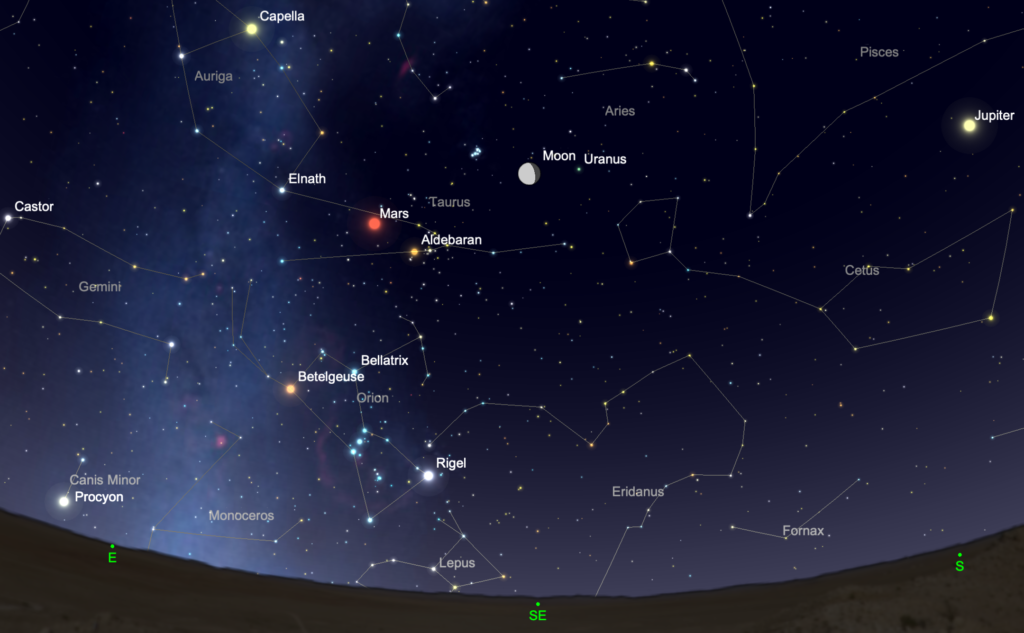
15 Sept. Look in the early-morning sky to see a waning gibbous Moon rising with orange Mars and the Pleiades and Hyades star clusters.
15-30 Sept. The arc of the Milky Way splits the sky in half in the mid-evening hours making for a great photo opportunity or old-fashioned visual observing in dark sky as the Moon gets out of the way for the latter half of the month. The plane of the galaxy appears to thrust at a right angle from the southwestern horizon in Sagittarius, passes overhead through the constellation Cygnus, then arcs again down to the northeastern horizon into the rising constellation Auriga.
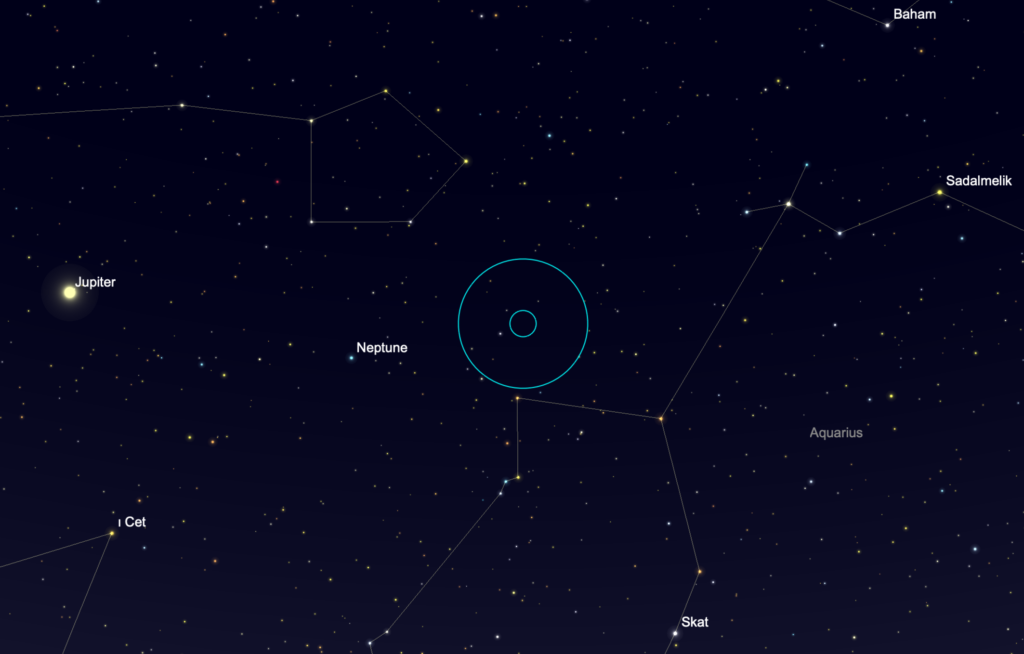
16 Sept. Neptune reaches opposition tonight in the constellation Aquarius just over the boundary with Pisces. Look for this distant ice giant about 8º south of the center of the Circlet of Pisces and 11º west-southwest of much brighter Jupiter. At magnitude +7.8, Neptune is visible with binoculars in dark sky. You will need a telescope and higher magnification to resolve its small, blue-green 2.3″ disk. At magnitude +13.5, Neptune’s largest moon Triton lies within visual reach of a 10” or larger telescope. But a smaller telescope armed with a good planetary camera can easily get a snapshot of this icy moon. At opposition, Neptune lies about 4 light-hours (28.9 astronomical units) from Earth.
17 Sept. Last Quarter Moon, 21:52 UTC
Sept. 17-30. Over the next couple of weeks, northern-hemisphere observers who have very dark sky can see the zodiacal light in the eastern sky about 90-120 minutes before sunrise in the northern hemisphere. This whitish glowing wedge of light appears to thrust upward from the horizon (see image below). The zodiacal light, sometimes called the “False Dawn”, is simply sunlight reflected off tiny dust particles in the inner solar system.
20 Sept. A waning crescent Moon rises in the east just 3º from Pollux in Gemini.
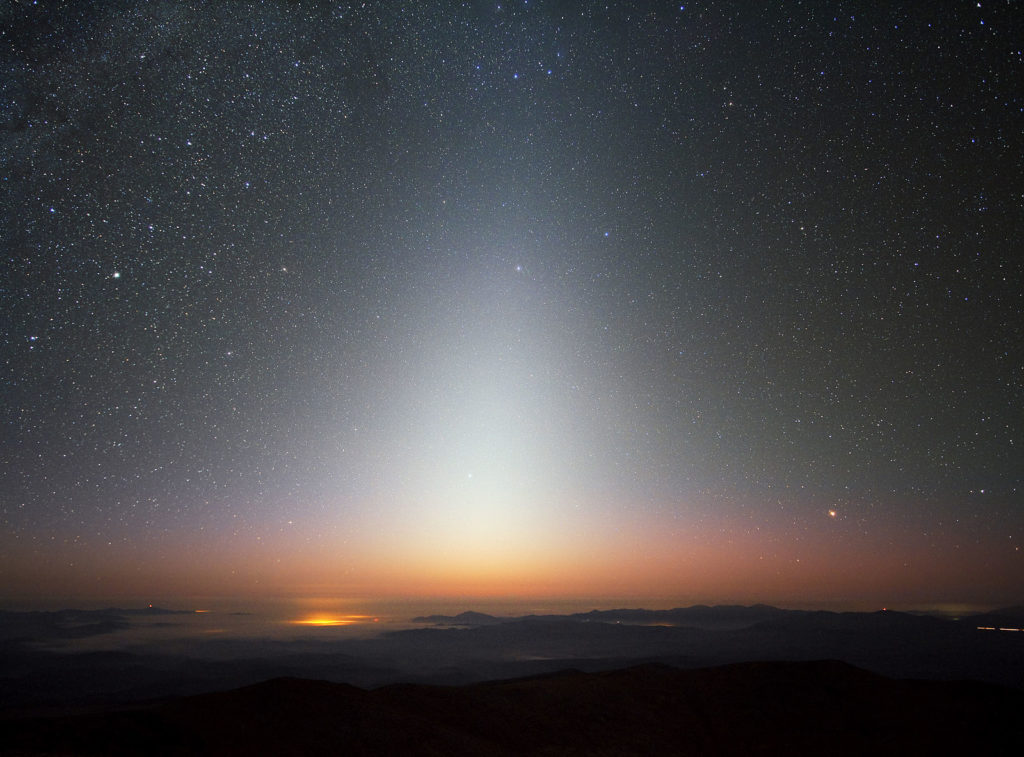
21 Sept. A slender Moon lies about 3º from the Beehive star cluster (Messier 44) in the eastern early-morning sky
23 Sept. The Sun crosses the celestial equator heading south on the ecliptic at 01:04 UTC. This equinox marks the first day of spring in the southern hemisphere and the first day of autumn in the northern hemisphere.
23 Sept. First-magnitude Regulus rises with a slender crescent Moon in the early morning sky before sunrise.
23 Sept. Mercury reaches inferior conjunction as it lies between the Earth and Sun. It reappears in the morning sky early next month.
26 Sept. Jupiter reaches opposition, rising in the southeast as the sun sets in the west-northwest. The planet lies at a distance of about 593.6 million kilometres, its closest approach to Earth since 1963! Jupiter shines at a dazzling magnitude -2.9 tonight, brighter than anything else in the night sky except for the Moon. Its disk spans nearly 50″. The big planet lies within 1 arcminute of the celestial equator, ideal for observing in the northern and southern hemispheres. Jupiter’s four largest moons – the Galilean moons – are also at their brightest and largest near opposition, and all four resolve into tiny disks in a telescope at moderate magnification. Jupiter stays well positioned for viewing for the rest of the year as it moves into the evening sky.